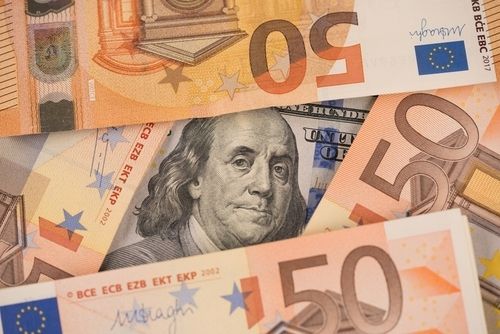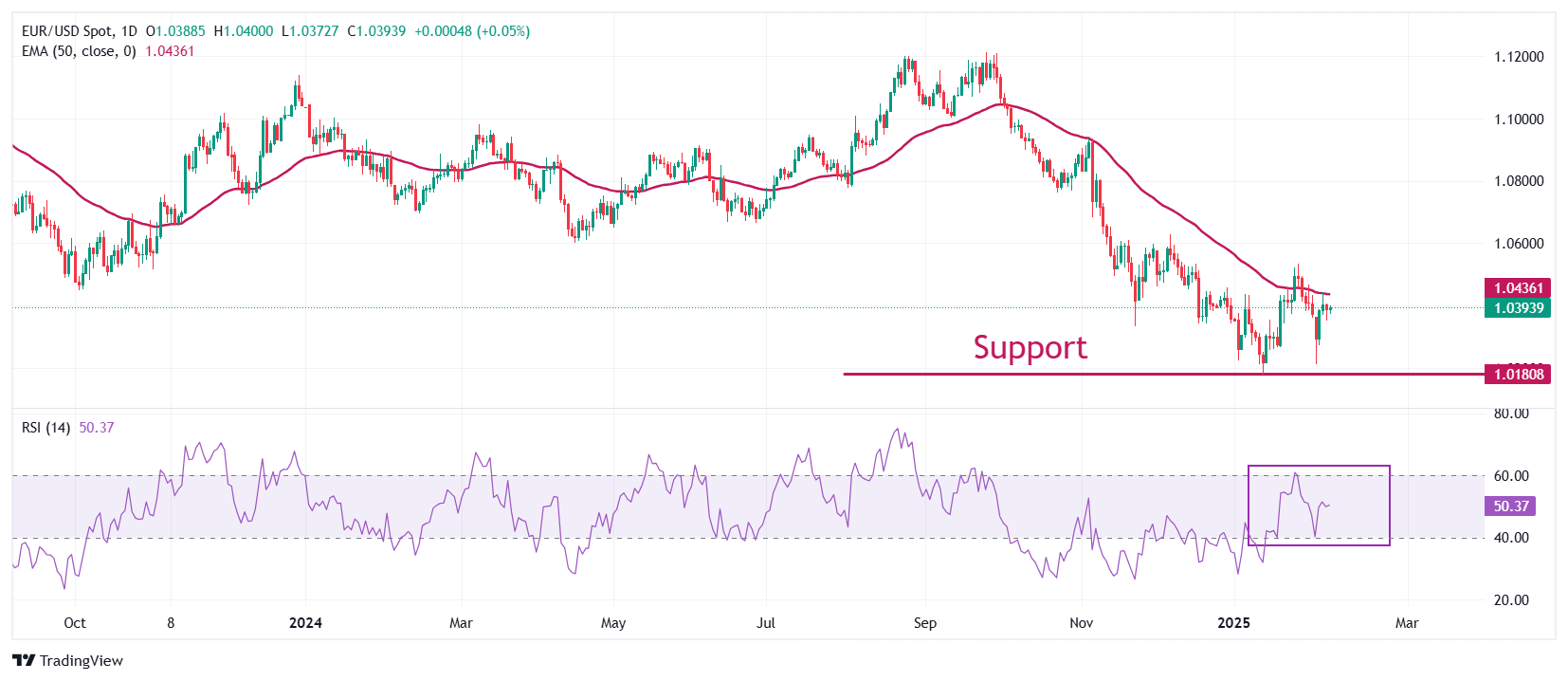
EUR/USD trades broadly sideways around 1.0400 as investors await the US NFP data for January.
The Fed is expected to cut interest rates in the June policy meeting.
ECB’s Cipollone expects the impact of tariffs on China to be deflationary for the Eurozone.
EUR/USD steadies in a tight range around 1.0400 in Friday’s European session as the US Dollar (USD) trades cautiously ahead of the United States (US) Nonfarm Payrolls (NFP) data for January, which will be published at 13:30 GMT. The US Dollar Index (DXY), which tracks the Greenback’s value against six major currencies, ticks lower to near 107.60.
Economists expect the US economy to have added 170K workers, fewer than 256K in December. The Unemployment Rate is estimated to have remained steady at 4.1%. The official employment data is expected to drive market speculation about how long the Federal Reserve (Fed) will hold interest rates at their current levels.
Signs of a strong labor market would boost expectations that the Fed will remain in the waiting mode regarding interest rates for longer. On the contrary, soft numbers would stimulate Fed dovish bets. According to the CME FedWatch tool, the Fed is expected to announce its next interest rate cut in the June policy meeting.
Last week, Fed Chair Jerome Powell said the central bank would make monetary policy adjustments only after seeing “real progress in inflation or at least some weakness in labor market” after the Fed left interest rates unchanged in the range of 4.25%-4.50%.
Investors will also pay close attention to the Average Hourly Earnings data, which is a key measure of wage growth that drives consumer spending. The wage growth measure is estimated to have decelerated to 3.8% year-on-year from 3.9% in December. In the month, Average Hourly Earnings are expected to have grown steadily by 0.3%.
Daily digest market movers: EUR/USD steadies while Euro’s outlook remains uncertain
EUR/USD seems steady at around 1.0400, but the outlook for the Euro (EUR) remains uncertain amid concerns that the Eurozone is likely to feel the pain of higher tariffs by US President Donald Trump. Last weekend, President Trump warned that Europe will definitely face tariffs for not buying enough American goods, but didn’t provide much information.
Analysts at Macquarie said President Trump held back specific tariff threats on the Eurozone because of "the lack of a stable government in Germany and France.” Still, they warned that a US tariff bomb would likely find “fertile ground in the EU” and escalate unresolved issues rapidly into trade tensions, given that “Europe is target-rich”.
In addition to global issues, the Eurozone outlook is also vulnerable because of domestic concerns. Growing risks of economic uncertainty have forced European Central Bank (ECB) officials to guide a dovish monetary policy outlook. ECB’s executive board member Piero Cipollone said in an interview with Reuters on Thursday that all officials agree “there is still room for adjusting rates downwards”.
When asked about the impact of President Trump’s tariffs on the Eurozone, Cipollone said, “If tariffs are imposed on us, the most immediate impact will be on growth”. He also added that tariffs on China would compel it to look to the shared bloc for dumping its goods due to tariffs from the US. Such a scenario will be deflationary for the economy.
Technical Analysis: EUR/USD stays below 50-day EMA
EUR/USD ticks slightly higher at around 1.0400 in European trading hours on Friday ahead of the US NFP employment data. The major currency pair faces pressure near the 50-day Exponential Moving Average (EMA) around 1.0436, suggesting that the overall trend is still bearish.
The 14-day Relative Strength Index (RSI) oscillates in the 40.00-60.00 range, indicating a sideways trend.
Looking down, the January 13 low of 1.0177 and the round-level support of 1.0100 will act as major support zones for the pair. Conversely, the psychological resistance of 1.0500 will be the key barrier for the Euro bulls.
* The content presented above, whether from a third party or not, is considered as general advice only. This article should not be construed as containing investment advice, investment recommendations, an offer of or solicitation for any transactions in financial instruments.



